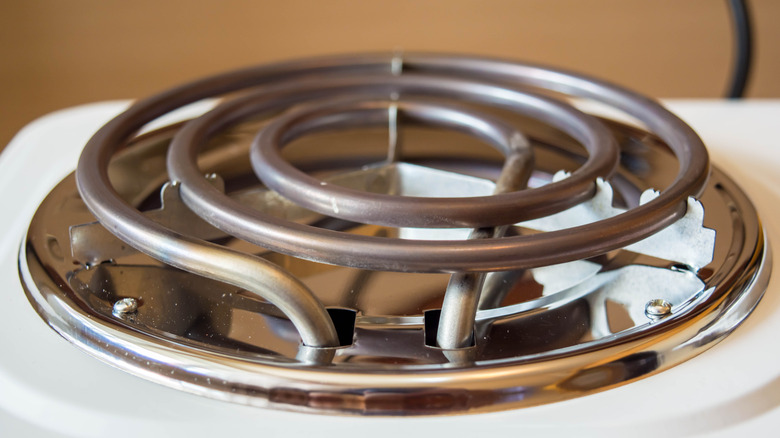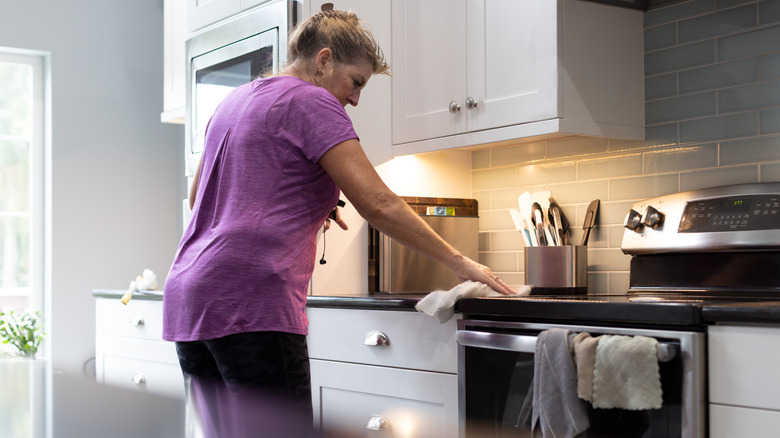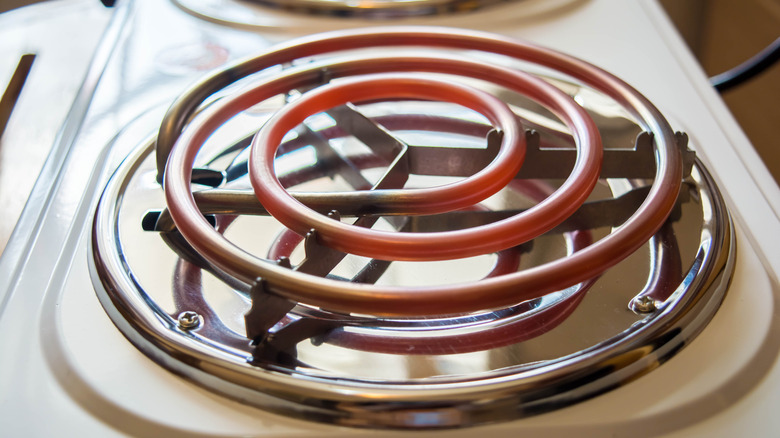How To Clean Your Stove Drip Pans So They Look Like New
Stove drip pans (the metal trays that sit under each of the burners of your electric coil cooktop) quickly collect crumbs, spillovers, and burnt-on residue. It doesn't take long for them to lose their luster, trading in their brilliant chrome finish for a dull, stain-mottled appearance that spoils the sparkle of your otherwise clean kitchen. Messy drip pans not only look unappealing, they can also affect the safety and performance of your stovetop. Loose bits of food or uncleaned oil splatters can create smoke or even become a fire hazard.
To keep your drip pans clean, fresh, and looking their best, use a deep cleaning routine to remove buildup and stains. First, remove the drip pans from your stovetop so cleaning products won't leak into the coils and short out the electrical components. It should be easy to unplug each coil with a slight tug. Then, you can lift out the drip pans for cleaning.
@later_kates How to clean your stoves drip pans 🧽 #learntocleanwithme #cleanwithme #cleantok #cleaningtiktok #howto #clean #fyp
After wiping away crumbs or liquids, generously spray each drip pan with dish spray – a powerful fix for fatty, cooked-on grease. It contains dish soap, a surfactant that lowers surface tension in water to draw fats away from surfaces, plus solvents like alcohol to break down and dissolve those fats. Let it sit for up to three to four minutes, then scrub and rinse your drip pans. To remove remaining stains, apply an abrasive cleaner like Barkeeper's Friend to each drip pan and scrub them until they sparkle.
How often to clean your stove drip pans
The best way to keep your electric coil cooktop looking brand new and avoid the need for deep cleaning is to wipe down your stovetop drip pans every time you cook. Any lingering residue will, when exposed to heat, form sticky, burnt-on buildup that will ultimately require deep cleaning to remove, similar to how it can take multiple rounds of soaking and scrubbing to clean burnt food from stainless steel pans. By wiping the drip pans when cleaning your oven as part of your daily kitchen cleaning routine, you'll remove crumbs and spills before they've been burnt on.
Make sure your stovetop is off and has had time to cool before cleaning the coils and drip pans. Once the stovetop has cooled, you can remove the coils and wipe them and the drip pans with a damp towel. If needed, you can use some soap and water, but you should never submerge the coils, as water will ruin the electrical connections. Completely dry your coils and drip pans before reattaching them to your stovetop. You might be tempted to line your stovetop drip pans with foil to catch spills, but this is not a safe solution. Foil placed close to the heating elements can trap heat and may actually melt, potentially causing a fire. Instead, try these ways to clean your kitchen with aluminum foil.
When to replace your coil drip pans
Sometimes, it's just not possible to restore your drip pans to a like-new finish. The drip pans that came with your oven are most likely made of chrome-plated metal which, while inexpensive, will eventually need to be replaced. Over time, they can warp or become damaged, rendering them unable to efficiently contain spills. They can also develop tarnishing, rust, and stains that won't budge with any amount of soaking and scrubbing.
Thankfully, it's easy and affordable to replace your drip pans. Check your oven manual to find out how to order replacement drip pans directly from the manufacturer. If purchasing your replacement drip pans elsewhere, make sure they're compatible with your stove and match the measurements of your existing drip pans. Want to give your stovetop an instant upgrade? Opt for ceramic drip pans over the standard, chrome-plated option for an updated appearance and a smooth, easier-to-clean finish.



